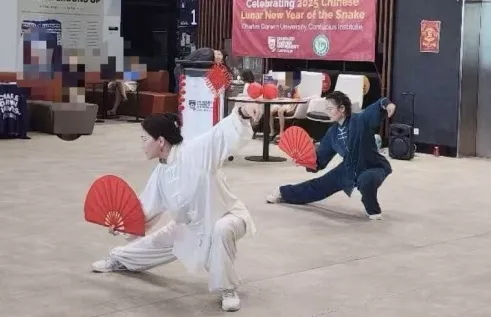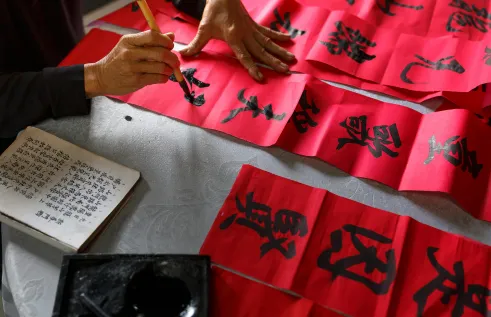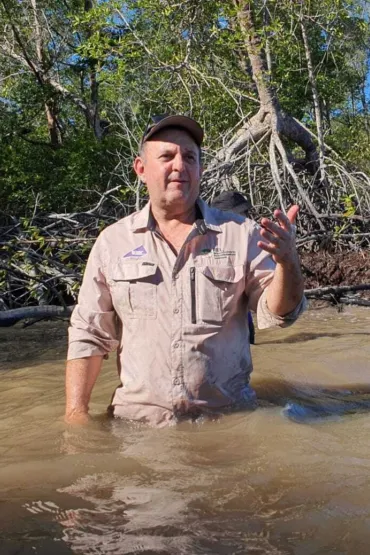RIEL seminar series
Mangrove Forest Landscape Rehabilitation Opportunity Assessment in Indonesia
| Presenter | Dr Benjamin Brown | |
|---|---|---|
| Date/Time |
to
|
|
| Contact person | E: riel.outreach@cdu.edu.au | |
| Location | Casuarina campus Yellow 1.1.39 and online | |
| Open to | Public | |
Indonesia maintains the largest most productive mangrove estate globally yet has experienced the world’s greatest extent of mangrove loss. A recent policy mandate to restore 600,000 ha of mangroves between 2020-2024 is at high risk of failure if Indonesia continues normative mangrove restoration practices underscored by inadequate assessment of biophysical restoration opportunity conducted without consideration of social, economic and political factors which led to initial degradation and deforestation, and which hinder restoration.
The over-arching aim of this study is to map and analyse mangrove forest landscape restoration (MFLR) opportunity in two critically degraded Indonesian landscapes; Demak, Central Java and Tanjung Panjang, Gorontalo, using a modified version of the Restoration Opportunity Assessment Method (ROAM). Consideration of biophysical factors and practitioner capacity to overcome biophysical barriers yielded 5,403 ha of restoration opportunity in Tanjung Panjang or 100% of the site, and 9,720 ha in Demak equal to 81% of the landscapes deforested mangroves. However, stakeholder mapping of restoration opportunity based upon social, economic and policy factors significantly reduced restoration opportunity. Three scenarios were developed in Tanjung Panjang totalling 113, 842 and 2492 ha of restoration opportunity (equivalent to 2.5%, 15.9% and 47.0% of the deforested landscape) with only 50.6 ha of opportunity in Demak corresponding to 0.4% of the deforested landscape.
Qualitative content analysis of interviews with landscape stakeholders revealed 31 social, economic and policy barriers across the two landscapes were identified which serve to impede MFLR opportunity. Findings of this research show that a suite of social, economic and political factors outweighs the importance of biophysical factors when determining a ‘true’ restoration opportunity in mangrove systems. Restoration options revealed through application of a system-state and threshold model developed during this research revealed restoration and rehabilitation as the two main options in Tanjung Panjang and rehabilitation or intentional transformation in Demak. Currently, the Government of Indonesia is adopting aspects of the ROAM assessment process as well as the system-state, threshold and restoration option model to identify and prioritize sites to make progress towards the national restoration target.
Dr Benjamin Brown lived and worked in Indonesia for 20 years from 1995-2015. In 2000, Ben founded a small grassroots NGO called Mangrove Action Project - Indonesia working in community based coastal resource management in 12 provinces in Indonesia as well as Cambodia, Thailand, Sri Lanka, Malaysia and Timor Leste. MAP-Indonesia became Blue Forests, who have since restored over 4000 ha of mangroves, and run 180 coastal field school programs for rural livelihoods development. Blue Forests is currently engaged with integrated mangrove management projects in Sumatra, Java, Kalimantan Sulawesi and Papua. In 2016 Ben began his PhD candidacy at Charles Darwin University – Research Institute for Environment and Livelihoods which he completed in 2021 evaluating mangrove forest landscape restoration opportunity from biophysical, social, economic and policy perspectives. Ben currently serves as a joint post-doctoral researcher at CDU-RIEL and AIMS; supporting on-going mangrove management programs in Indonesia and investigating the feasibility of blue carbon finance in two Indigenous communities in the Northern Territory. Ben also currently consults for the World Bank, assisting the Government of Indonesia in delivering the Mangroves for Coastal Resilience project in 4 provinces in Indonesia.
Related Events

Tai Chi Kung Fu Fan
Join our Tai Chi Kung Fu Fan classes to learn a unique style of Tai Chi combined with other martial arts and dance movements! The classes run every Monday at 5.30 pm, from 26 January - 30 March.
Read more about Tai Chi Kung Fu Fan
Chinese kung fu classes for kids
Join our kung fu classes specialised for children. It’s more than just exercise—it’s a journey to a healthier, brighter, and more focused future for every child! The classes run every Monday at 5.30 pm, from 26 January - 30 March.
Read more about Chinese kung fu classes for kids
Chinese calligraphy for beginners
The CDU Confucius Institute is now offering Chinese calligraphy for beginners, a new course on the CDU Casuarina campus. The workshops will run every Tuesday, from 5 pm - 6 pm, starting 27 January to 31 March.
Read more about Chinese calligraphy for beginners
